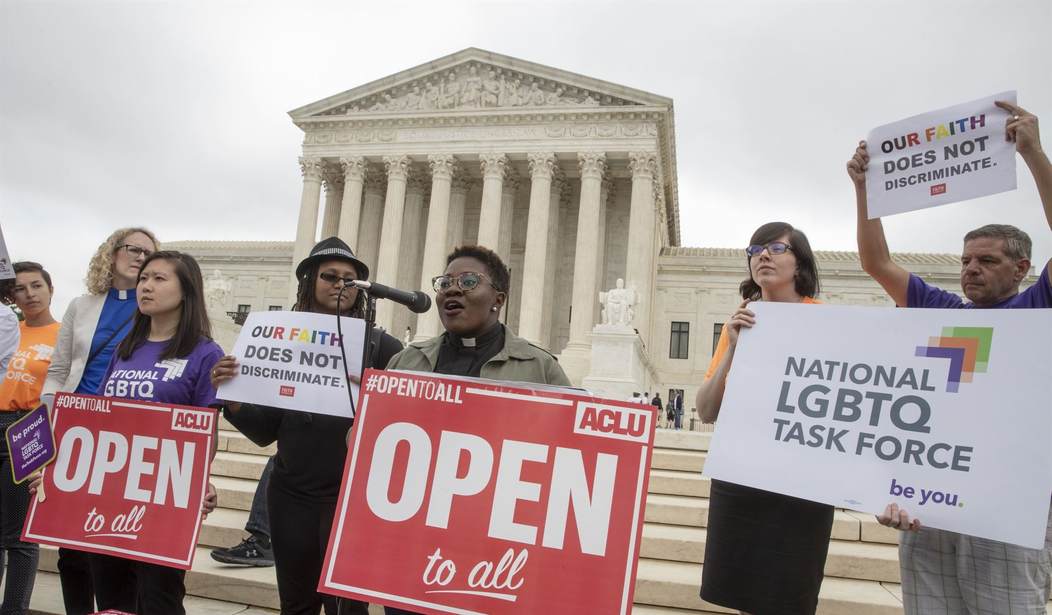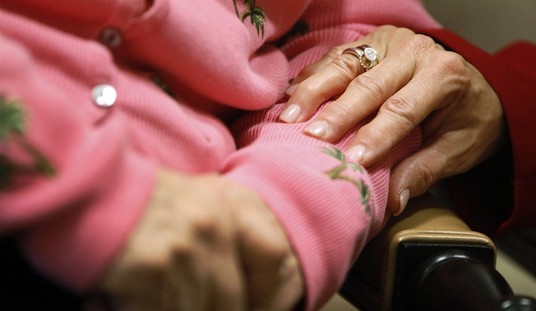One of the most regrettable aspects of the debate over the progressive LGBTQ agenda being pushed in education and other institutions is the fact that the hard left had a head start in their indoctrination efforts. The endeavor to inculcate K-12 students with ideas and concepts related to gender identity was only recently discovered during the COVID-19 pandemic when children were forced to learn from home. It was then that parents found out what schools were teaching their children.
What had not yet become apparent was that the authoritarian left had actually been infusing their various ideologies related to gender, race, and sexuality for many years before it came to light. This meant that they were able to influence young minds without worrying about backlash coming from a populace that was largely kept in the dark. Now, some data suggests that the left has had far more success in this initiative than many of us would like to believe.
In recent years, there has been a significant increase in the number of individuals identifying as LGBTQ+. From high schools to workplaces, it seems as though there is a growing acceptance and celebration of diverse sexual and gender identities.
However, some are raising concerns that this rise in LGBTQ+ identification may not be entirely organic, but rather the result of external influences such as social contagion and influence efforts taking place in schools and on social media. In this article, I will explore the debate surrounding whether or not exposure to LGBT education is encouraging young students to identify as LGBTQ+, and what the implications of this trend might be.
According to a recent report from the Centers for Disease Control and Prevention (CDC), one in four high school students identifies as LGBTQ. The data was collected using the CDC’s Youth Risk Behavior Surveillance System (YRBSS) and found that 75.5 percent of high school students identified as heterosexual.
The remaining 24.5 percent identified as LGBTQ, with 12.2 percent identifying as bisexual, 5.2 percent as questioning, 3.9 percent as other, 3.2 percent as gay or lesbian, and 1.8 percent indicating that they did not understand the question. The report suggests that the increase in the number of LGBTQ students may be due to changes in the wording of the questions, which now include students who are questioning their sexuality, according to a report from The Hill.
The CDC notes that “[i]ncreases in the percentage of LGBQ+ students in YRBSS 2021 might be a result of changes in question wording to include students identifying as questioning, ‘I am not sure about my sexual identity (questioning),’ or other, ‘I describe my sexual identity in some other way.’”
The notion that 25 percent of high schoolers identify as LGBTQ might come as a surprise, given the fact that most data shows that these individuals represent a very small percentage of the national population.
According to a 2022 report from Gallup, the percentage of adults in the United States who identify as lesbian, gay, bisexual, transgender, or another non-heterosexual identity has reached a new high of 7.1 percent. The figure has doubled since 2012 when Gallup first measured it. The data is based on more than 12,000 interviews conducted in 2021. While there has been a significant increase in the national numbers, it is still nowhere near what the CDC’s report found among high schoolers.
But another revelation coming from the Gallup poll sheds further light on the matter. Their study also noted that about 21 percent of Generation Z adults who have reached adulthood identify as LGBTQ, nearly double the proportion of millennials who do so. The proportion of those born before 1946 identifying as LGBTQ has fallen from 11 percent in 2017 to eight percent in 2021. The percentage of baby boomers and Gen X adults who identify as LGBTQ has remained relatively steady.
Even further, the percentage of Gen Zers who identify as LGBTQ has risen from 10.5 percent in 2017 to 20.8 percent in 2021. That’s right, the percentage nearly doubled in only four years.
I’m going to put it simply: There is absolutely no way that this drastic increase is purely organic. This is not the result of more people becoming comfortable publicly identifying as LGBTQ as many on the hard left would suggest. This means that there is far more to this trend than meets the eye.
As there has been a sudden surge in high school students identifying as LGBTQ+, it is worth examining the root causes of this pattern. While the CDC report attributes the rise to changes in wording on the survey, it makes sense to consider the possibility that a social contagion effect might also be at play.
The phenomenon of social contagion occurs when individuals adopt the attitudes, beliefs, or behaviors of others within a group, leading to a sudden and widespread shift in societal norms. With the normalization of LGBTQ identities in contemporary culture and the increasing acceptance of these identities by society, it is plausible that many students might be more inclined to identify as LGBTQ to conform with their peers or to feel part of a particular group. This is an idea that many, including myself, have put forth as a significant element in this equation.
Another possible contributor to the rise in LGBTQ identification among high school students is the LGBTQ curriculum being used in many schools. To say that progressives have been aggressive in promoting gender theory in K-12 classrooms would be an understatement.
Proponents of LGBTQ-inclusive education argue that it is essential to promote inclusivity and prevent discrimination against LGBTQ students. However, critics argue that the curriculum has an ideological agenda and that it can confuse students who are unsure about their sexual identities. Even further, it is not a leap to suggest that schools adopting these practices are covertly and overtly encouraging students to embrace an LGBTQ identity, which only adds to the social contagion.
The reality that many school districts have adopted policies allowing educators and school staff to help students “transition” to the opposite gender without the knowledge or consent of parents illustrates further that this is not a matter of educating students on LGBTQ matters, it is an effort to promote the identity using the educational system.
Unfortunately, those in opposition to what the left is doing in the classroom are in a position where they have to play catch up. Damage has already been done – especially to kids who have been put on puberty blockers and other “treatments” designed to turn them into someone they cannot possibly become. This is yet another reason why we must be even more vociferous and adamant in opposing this ideology before it destroys even more children in the process.














